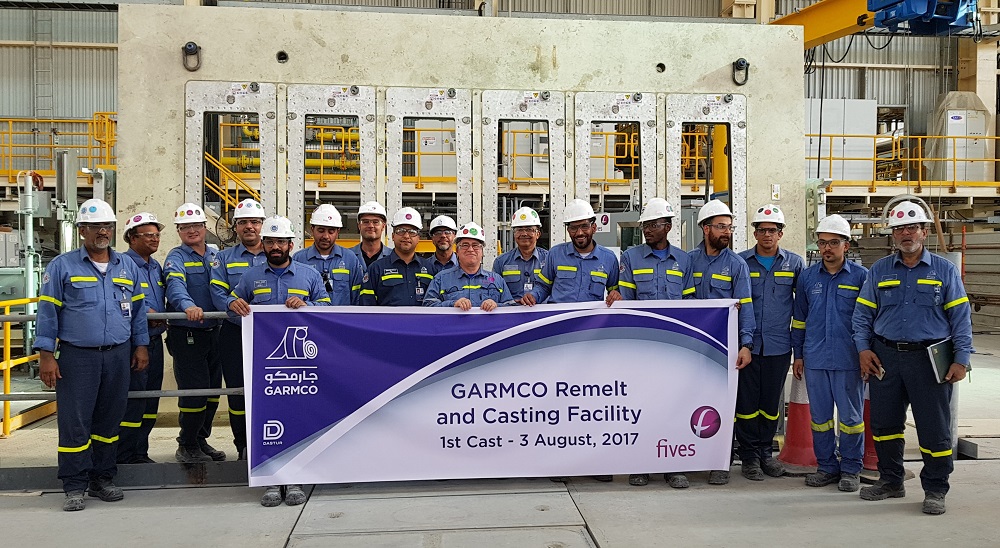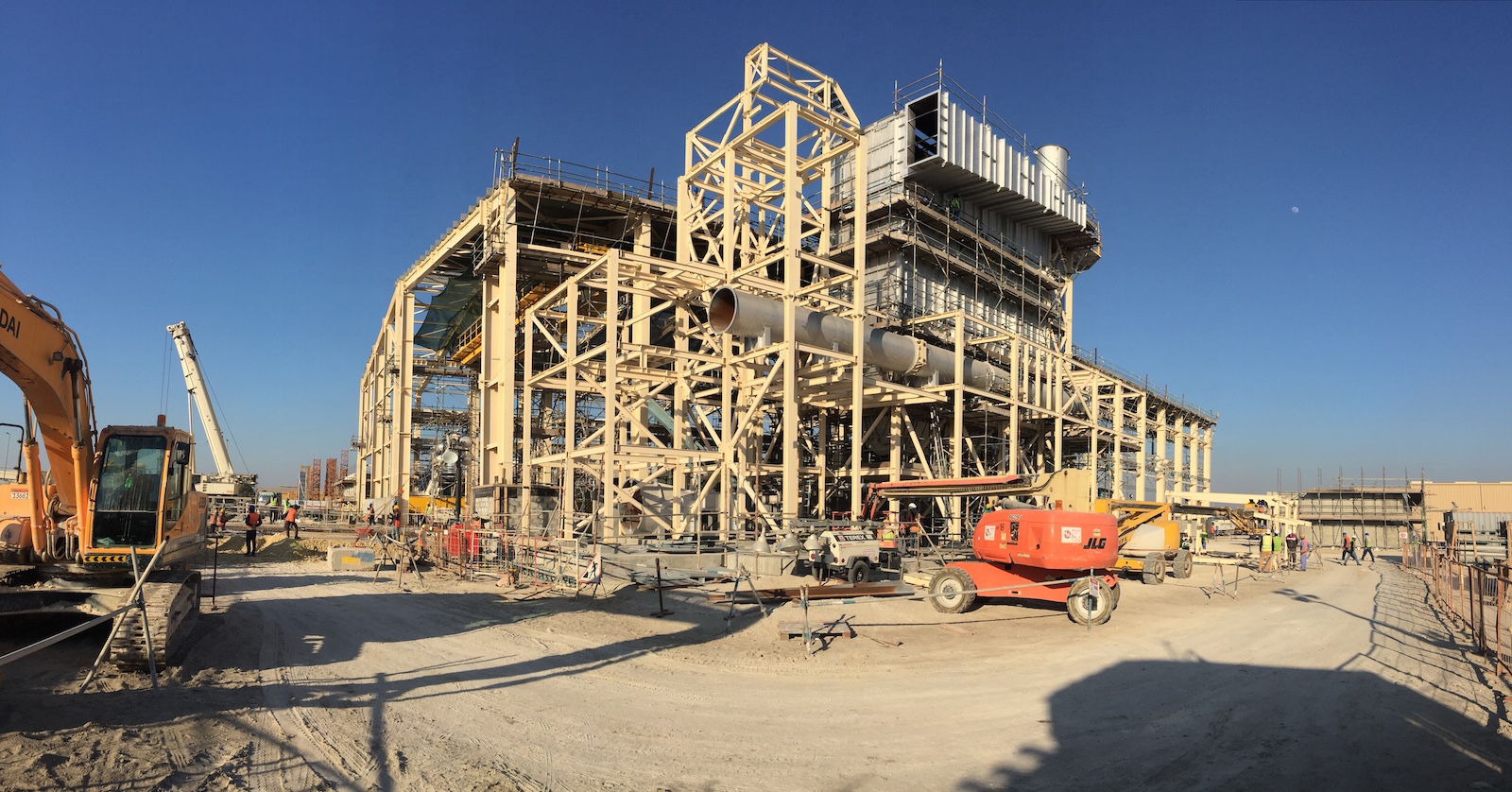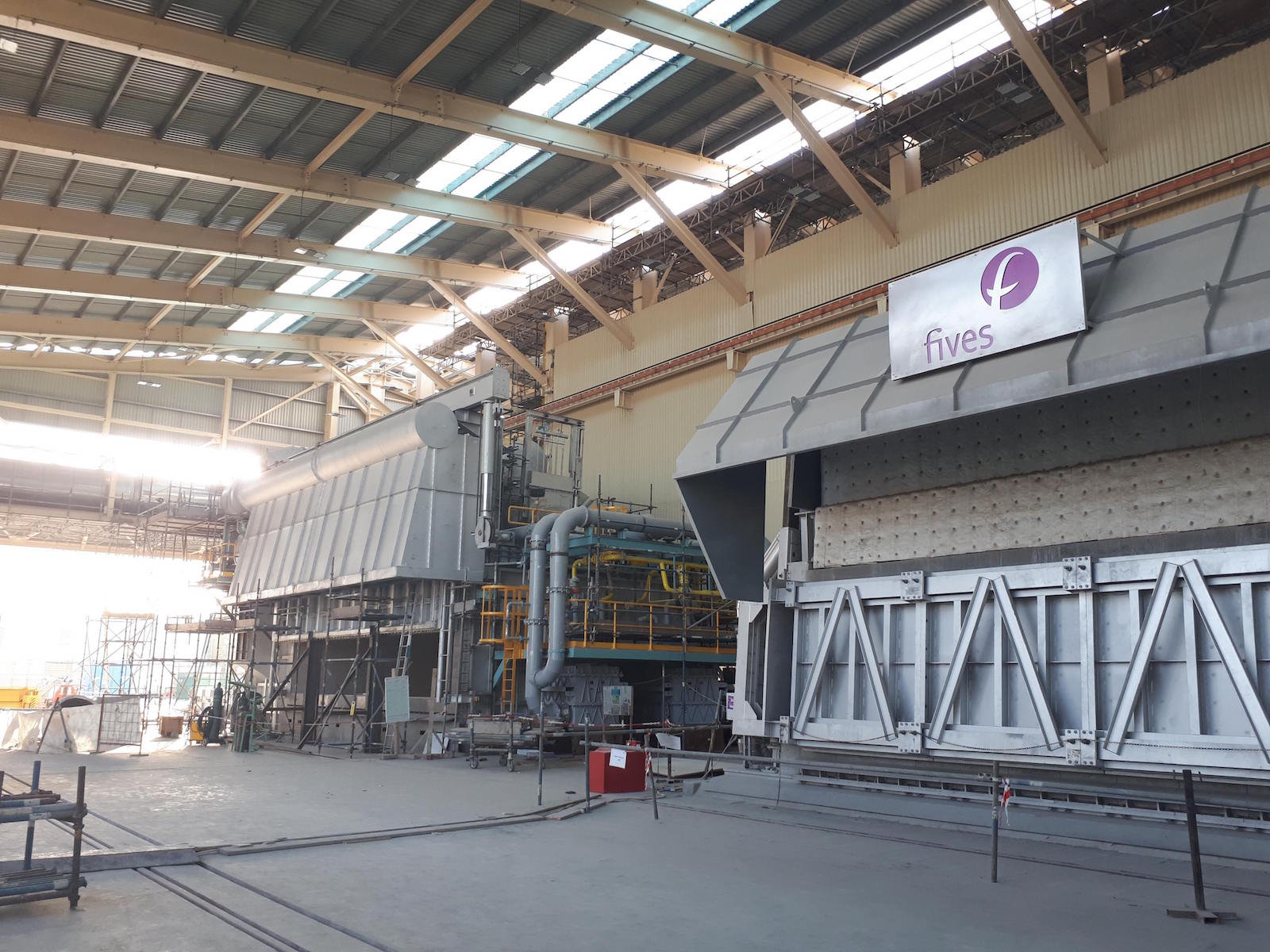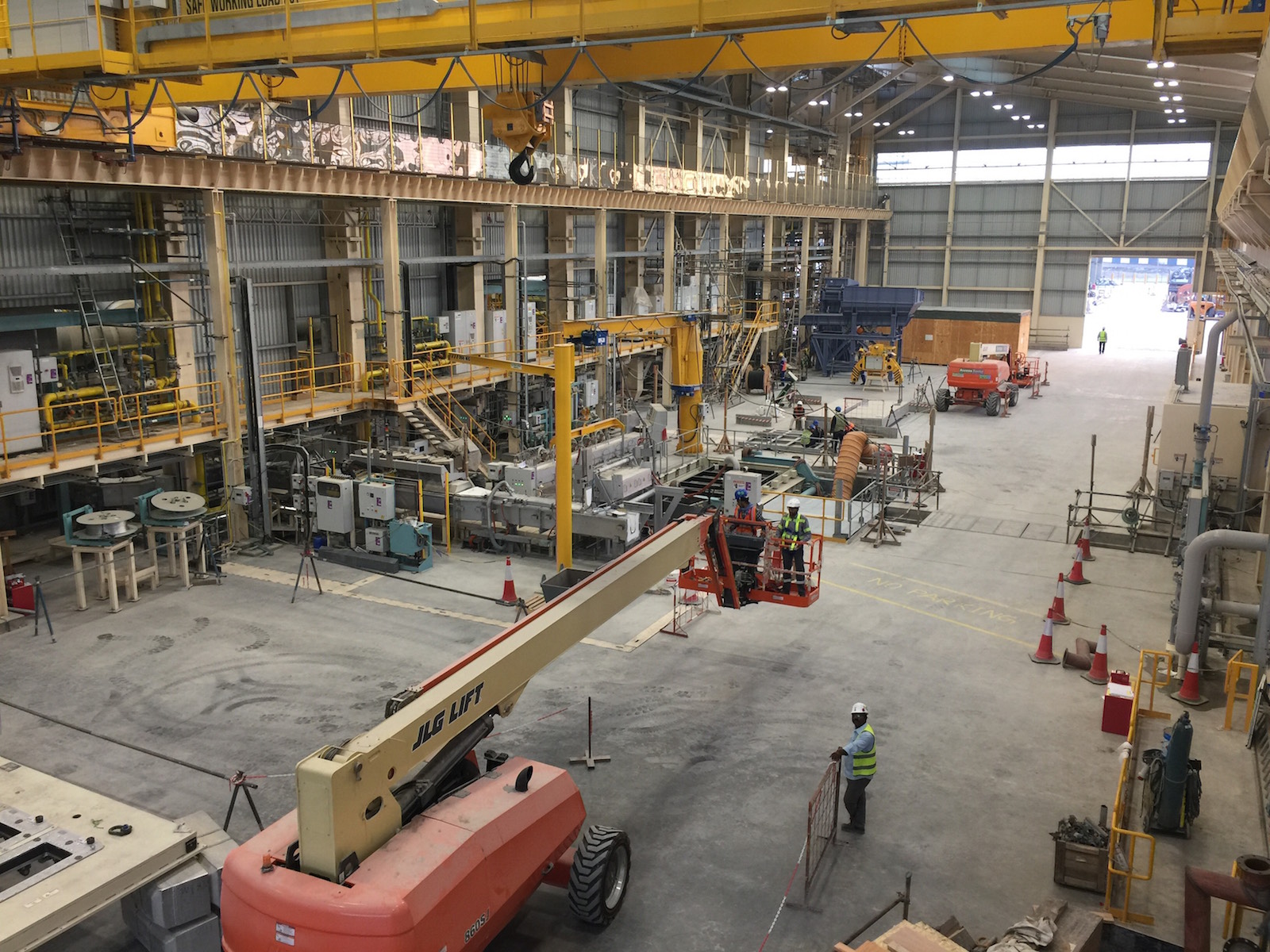Editor’s Note: This article first appeared in the August 2017 issue of Light Metal Age. To read more articles from this issue, please subscribe.
Gulf Aluminium Rolling Mill (GARMCO) successfully cast its first rolling slab at the new recycling facility constructed at its rolling complex in the Kingdom of Bahrain (Figure 1). The US$55 million expansion project is inline with the company’s strategy to become a regional leader in aluminum recycling, as well as to lower the cost of metal casting.

Company Profile
GARMCO was established in Bahrain by royal decree in 1981, with the governments from several GCC countries as shareholders. The aluminum rolling mill officially started operations in 1986 with a nominal annual production capacity of 40,000 tonnes. Since then, the company has continuously expanded its production of high quality, rolled products and now produces 165,000 tonnes annually. The rolled products include 1xxx, 3xxx, 5xxx, and 8xxx alloys for a variety of industries, including automotive, aerospace, marine, electronics, and building and construction, among others. One of its notable applications, includes the aluminum roof and wall cladding for the Ferrari World theme park in Abu Dhabi, UAE. GARMCO is one of the largest downstream facilities in the Middle East for rolling, cutting, and fabrication of aluminum sheet and foil.
GARMCO is supplied with primary aluminum slab for its rolling operations by Aluminium Bahrain (Alba), as well as by recycling its own internally produced scrap through on-site casting operations.
In addition to its operations in Bahrain, GARMCO has pursued geographic expansion with the construction of sales and service centers around the world designed to meet the needs of its customers in over 45 countries. Around 75% of their sales are outside of the GCC, with significant growth seen in the U.S., Europe, and MENA regions, while maintaining long-standing customers in Asia and Australia.
New Recycling Operations
GARMCO has recycled its own production scrap since the start of operations through its casting center 1, which produces around 78,000 tonnes of slab annually. However, the company recognized there was an opportunity to recycle regional post-consumer material. Currently, most of the post-consumer material in the GCC is shipped overseas to Europe and the U.S., which incurs additional cost and wasted energy. With the construction of a new recycling facility (Figure 2), GARMCO aims to recycle a wide range of post-consumer material and produce high quality slab for its rolling operations—thus creating a sustainable supply chain in the region.

exterior building (February 2017).
GARMCO appointed Fives as its engineering procurement construction (EPC) contractor for the project. As such, Fives has been responsible for all engineering, project management, and construction services associated with the recycling facility. They have implemented the latest 3D engineering tools and management techniques to ensure the smooth execution of the project.
Dastur Engineering was appointed as the engineering consultant and Envirotech as the environmental consultant on the project, both local companies in Bahrain. Dastur in particular was responsible for overseeing the project on GARMCO’s behalf, supporting the company throughout the design phase and providing technical and project management to ensure the detailed specifications were met or exceeded.
The new recycling facility features a fixed 105 tonne twin chamber furnace (TCF) from Otto Junker that will be used to recycle clean post-industrial and consumer material. The furnace includes a Pyrotek electromagnetic pump that is capable of pumping 2 tonnes per minute. Approximately every 10 minutes, 3-5 tonnes of feed stock will automatically be added to the melting chamber, after all of the gases from the previous load have been treated in the pyrolysis chamber and processed through the air pollution control system designed by Fives. All of the furnaces have regenerative burners that minimize natural gas usage by preheating the combustion air, which will provide a significant cost saving.
Fives designed the two 70 tonne tilting melting/holding furnaces (Figure 3), which were fabricated by Jasco and will be used for alloying and casting. Via electric pump, 30 tonnes of liquid metal is transferred into the tilting furnaces from the TCF at a rate of 2 tonnes per minute. An additional 30-40 tonnes of clean material is added to the furnaces, followed by alloying in preparation for casting. In order to ensure the high quality of the molten metal, a STAS rotary flux injector was installed between the tilting furnaces for stirring and treatment of each furnace prior to casting. During casting, the metal is degassed and cleaned inline within the Drache launder system using an eight rotor aluminum compact degasser also supplied by STAS, and a ceramic foam filter box.

melting/holding furnaces (right) being installed at the recycling plant
(June 2017).
The six-slab casting system supplied by Wagstaff (Figure 4) incorporates low head composite (LHC™) molds with inductive level sensors to tightly control the metal level. This minimizes slab surface segregation and improves the surface finish of the slab, enabling GARMCO to reduce scalping depth prior to rolling. To ensure consistent slab quality, Fives designed a water system with a fully automated 3D Trasar® chemical dosing facility supplied by Nalco Energy Services to maintain the water quality within tight limits.

In addition, the recycling facility utilizes cranes from Michielotto, a new band saw from Bonetti, and a gas pipeline upgrade by Mechanical Contracting & Services Company (MCSC) and Tebodin.
Across the board, the new facility has been designed to meet stringent environmental requirements and to meet both Bahraini and European quality standards. An example of the environmental aspects of the plant includes the installation of the massive air pollution control system from Fives designed to ensure that air quality standards are achieved. In addition, the site’s state-of-the-art water quality system ensures all the water used exceeds Bahraini discharge requirements. In order to ensure the new facility is operated by knowledgeable personnel, GARMCO has also invested in training its operators both overseas and locally. In particular, they partnered with Alba for the training of personnel in automated casting systems on-site at Alba.
At present, GARMCO recycles around 60,000 tonnes of internal scrap. Depending on the alloys and products that they will produce in 2018, the new recycling facility will expand its capability from the current 78,000 tonnes to around 200,000 tonnes of recycled products, with primary 1070 standard ingot and sows to help dilute the melt in order to meet the tight customer specifications required for the rolling of high quality sheet products. An area next to the new recycling facility has been left open to allow for additional furnaces and casting facilities for further expansion, if the opportunity arises.
Conclusion
As a relatively small rolling mill by global standards GARMCO has to be flexible and willing to produce a diverse range of products for the market. The new recycling facility aids in this goal, providing the company not only with a secure supply of rolling slab, but also enabling it to serve the GCC with a sustainable supply chain through the purchase of post-consumer scrap. The new plant is expected to ramp up to full production by November 2017.
